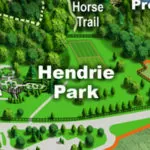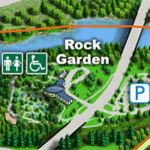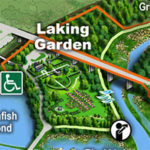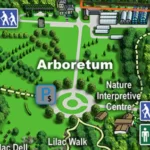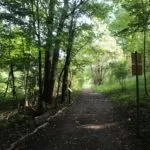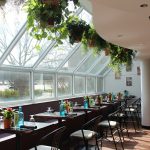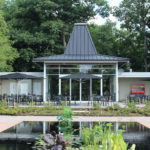| Membership | Price (+HST) |
|---|---|
| Single | $85/year |
| Single Plus | $120/year |
| Family | $130/year |
| Family Plus | $175/year |
| Contributing | $300/year |
| Supporting | $600/year |
| Sustaining | $1,000/year |
| Benefactor's Circle | $2,500/year |
| Director's Circle | $5,000/year |
| President's Circle | $10,000/year |
Our Story
Plants are life. They are life-giving and life sustaining.
For over eight decades, Royal Botanical Gardens (RBG) has connected people to the plant world. We do this not only to awaken people to plants’ beauty, diversity and necessity, but also to serve as a beacon for an increasingly urgent movement to preserve plant species and habitats and, by extension, our planet.
Part of the Niagara Escarpment UNESCO World Biosphere Reserve, RBG plays a vital role in this region, protecting and preserving 2,100+ acres of environmentally sensitive areas (including 2,000+ acres of nature sanctuaries, and 100+ acres of cultivated gardens and an arboretum), to improve the ecosystem from Lake Ontario to the Niagara Escarpment; ensuring a balanced relationship between people and nature, and, connecting natural spaces where wildlife can thrive.
RBG is an educator and experience creator delivering cultural, artistic and culinary experiences throughout its diverse network of gardens and natural spaces.
Royal Botanical Gardens acknowledges the long history of First Nations and Métis People in the Province of Ontario, and pays respect to the Six Nations of the Grand River Territory and the Mississaugas of the Credit First Nation, the holder of the Treaty with the Crown for these lands. The land we steward is within the traditional territories of the Haudenosaunee, Anishinaabe, and Huron-Wendat Nations.
Our Mission
We dedicate our expertise in horticulture, conservation, science and education to connect people, plants and place for the purpose of nurturing and preserving healthy growing life on our planet.
Our Vision
A world in which everyone is awake to the beauty, diversity and necessity of plants.
RBG is a Registered Charity
Donations to Royal Botanical Gardens help to:
- Protect and restore +2,100 acres of environmentally sensitive areas including nature sanctuaries (where approx. 58 species-at-risk have made their home), cultivated gardens and an arboretum;
- Teach the public and educate school children about the importance of plants and nature, and how to be environmental stewards in their community;
- Create display gardens which beautify our region’s landscape and teach people how to transfer best practices into their own backyard;
- Host events that celebrate our landscape and highlight our conservation activities (Fishway demonstrations, guided tours, winter exhibits)
- Engage in research projects and networks to pursue environmental sustainability;
These and other leadership initiatives could not be undertaken without the support of our members, donors and volunteers.
Our History
For nearly 80 years Royal Botanical Gardens has been an ecological jewel at the western tip of Lake Ontario. Conceived and founded through the tireless efforts of early conservationist Thomas Baker McQuesten, RBG lands were set aside to create the region’s first botanical garden.
Patterned after Kew Gardens in England, RBG was created to serve as both a regional botanical tourism site and an environmental agency. In his book “Garden with a View”, former Executive Director Dr. Leslie Laking explains RBG’s unique role in society:
“Royal Botanical Gardens puts nature’s beauty on display, but it isn’t a park system. It teaches but it isn’t a school. It protects and preserves forest and marsh, but it isn’t a conservation authority. It collects and propagates botanical knowledge and plant life, but it is not a library, museum, or laboratory. It is all those things and more than their sum”. – Dr. Leslie Laking, RBG Executive Director, 1954-1981
Royal Botanical Gardens was designated a National Historic Site of Canada in 1994. This recognizes the unique role major landscape architects played in creating RBG’s large gardens, the national significance of our plant collections, and historic movements for city beautification and nature conservation that came together in RBG’s creation. Inspired by these movements, RBG’s founder Thomas Baker McQuesten and his colleagues Carl Borgstrom, designer of the Rock Garden, Matt Broman, RBG’s first superintendent and designer of the Arboretum and Laking Garden, and later J. Austin Floyd, designer of the gardens in Hendrie Park, and many other architects, botanists, plant curators, and environmentalists created Canada’s largest botanical garden.
RBG is revered world-wide for its extensive 300 acres of display gardens. What makes RBG unique is that it also protects and stewards over 2100 acres of environmentally sensitive lands and diverse ecosystems that connect the Niagara escarpment to Lake Ontario.
In acknowledgement of this crucial environmental role, Royal Botanical Gardens was granted a provincial mandate in 1941 for the development of four areas of focus: Conservation, Education, Horticulture and Science. In the 70 years that followed, RBG has established a national and international reputation as a living laboratory for science, a connecting point for children in their early embrace of nature, a leader in sustainable gardening and the standard-bearer for ecological restoration and plant preservation.
In the face of devastating environmental threats world-wide, RBG is more relevant now than ever before. Its established and evolving environmental programs provide straight-forward, workable solutions designed to maintain sustainable biodiversity in Canada, for the world.

